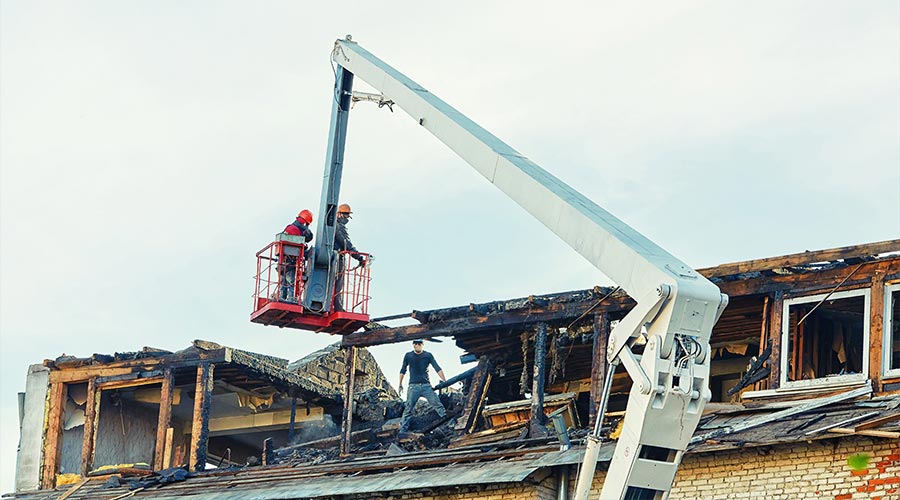
Contributed by Brian Speckhals, First Onsite Property Restoration
Every 88 seconds, a fire department responds to a workplace fire in the United States. This week is Fire Prevention Week with a goal to raise awareness of fire hazards and promote fire safety practices in homes and workplaces.
Being prepared not only helps prevent fires but also ensures swift recovery from unexpected damage that can occur during firefighting efforts. We’ve all seen what fire damage can do to a property, but the types of damage building owners often encounter after a fire loss can exceed expectations. Having full awareness of the different types of damage properties face can help people react faster, reducing continued damage and getting back on the road to recovery in short order.
Fire damage incidents require fast action by first responders. The fire department arrives with one objective top of mind; to save any people that are still in danger. This is done by any means necessary, which inevitably creates more damage to the property. Their second objective is to save what remains of the property and eliminate the risk of the fire spreading.
Property managers and building owners know to expect ash and rubble, but what is often overlooked is the continued damage that is created while extinguishing the flames. Firefighters shoot hundreds of gallons of water into a property every minute to douse a raging fire. Similarly, sprinkler systems can release up to 15 to 16 gallons of water per minute. That water needs to go somewhere, and that is often to areas we do not want it to go to.
Consider what firefighters often need to do to extinguish a fire and save lives and property.
• Break windows and doors as a means of egress for occupants to escape.
• Cut open walls, ceilings, or the roof to allow heat or smoke to get out.
• They may also need to create a firebreak. Cutting a large trench in between two roof trusses, stopping the fuel source and keeping the fire from expanding.
The big takeaway is that a firefighting team may need to create some damage in order to save the larger property.
Fire Damage Incidents Quickly Lead to Water Damage
All the water used to extinguish flames quickly develops a new problem – water damage. Once the water is added to the building, materials get wet, and the threat of mold growth starts to take hold within 24-48 hours. Mold gives off Microbial Volatile Organic Compounds (MVOCs). If these compounds make contact with certain individuals, they can make them very sick.
Here are some responses you may need to consider. After a fire is extinguished, cover holes created to help smoke and heat escape so if it rains you aren’t dealing with a larger loss. Place air movers, dehumidifiers, and fans in adjacent areas to help dry out the space and keep it from spreading. And have generators brought to your site so you can generate power for day-to-day operations until the power is restored.
The key to overcoming fire-related disasters is swift, informed action. By understanding the full scope of fire, water, and mould damage, property owners can take the necessary steps to minimize further harm and expedite the recovery process. However, the best course of action is prevention. Implementing fire safety measures and regularly maintaining equipment like smoke detectors and sprinkler systems can significantly reduce the risk of fire in the first place. With a proactive approach, and the right response plan in place, you can help ensure your property is back to normal as quickly and safely as possible.
Brian Speckhals is the Regional Director of Operations at First Onsite Property Restoration. He is a disaster recovery expert based out of Savannah Georgia.

 The Down and Dirty on Cleaning in Virus Season
The Down and Dirty on Cleaning in Virus Season How Surfactant Use is Expanding in Commercial Cleaning
How Surfactant Use is Expanding in Commercial Cleaning Operational Excellence Series 2025: Better Budgeting
Operational Excellence Series 2025: Better Budgeting